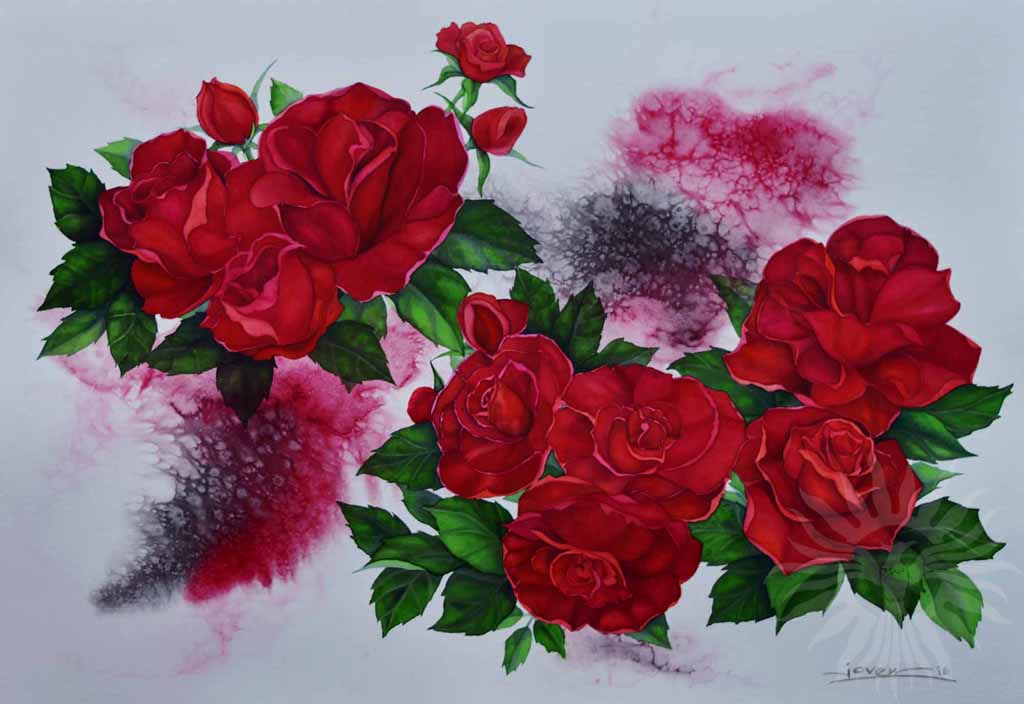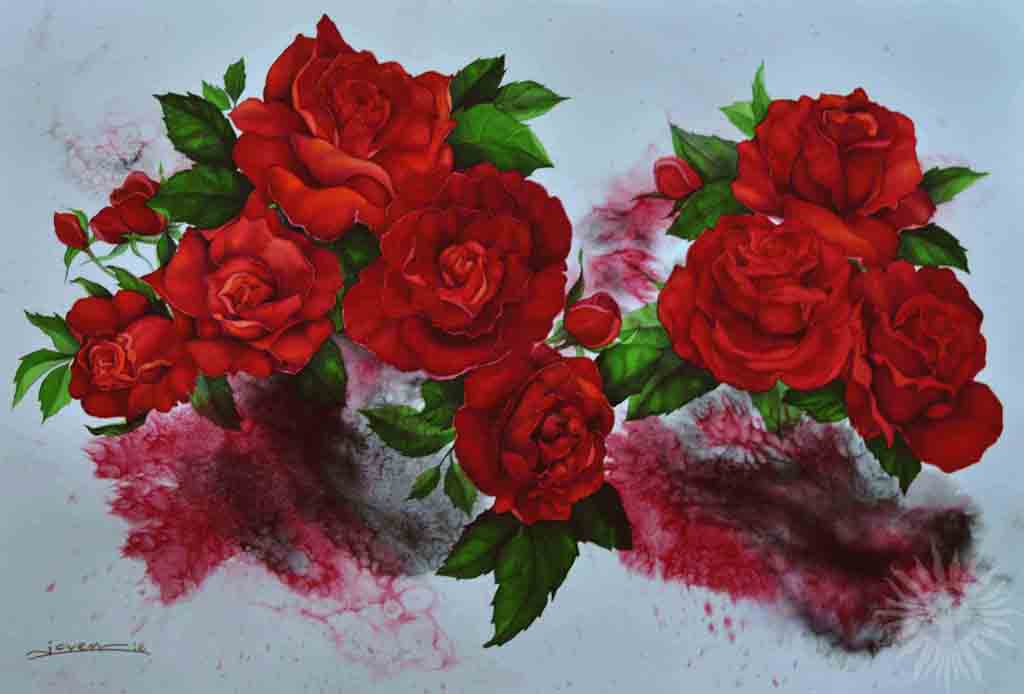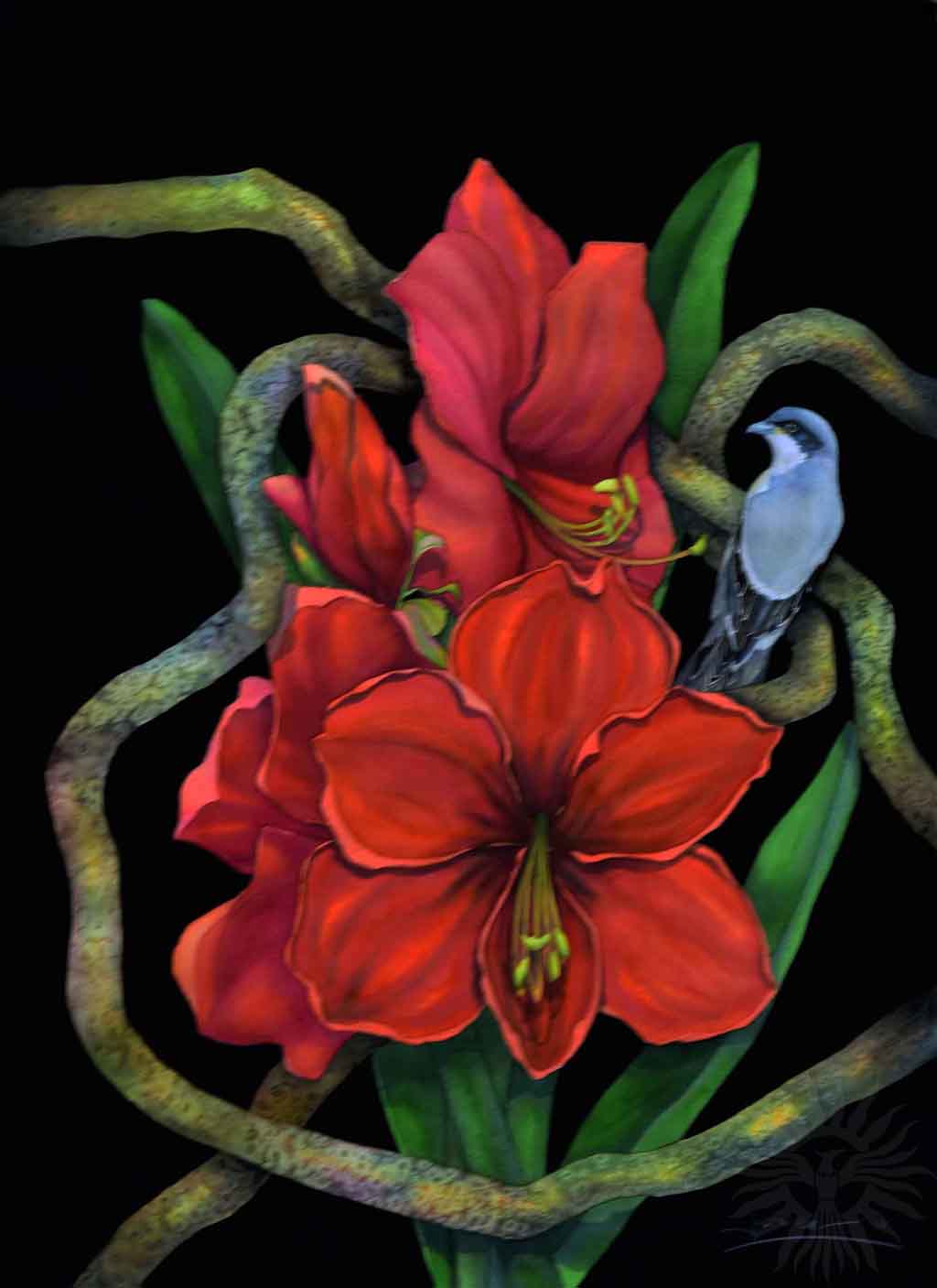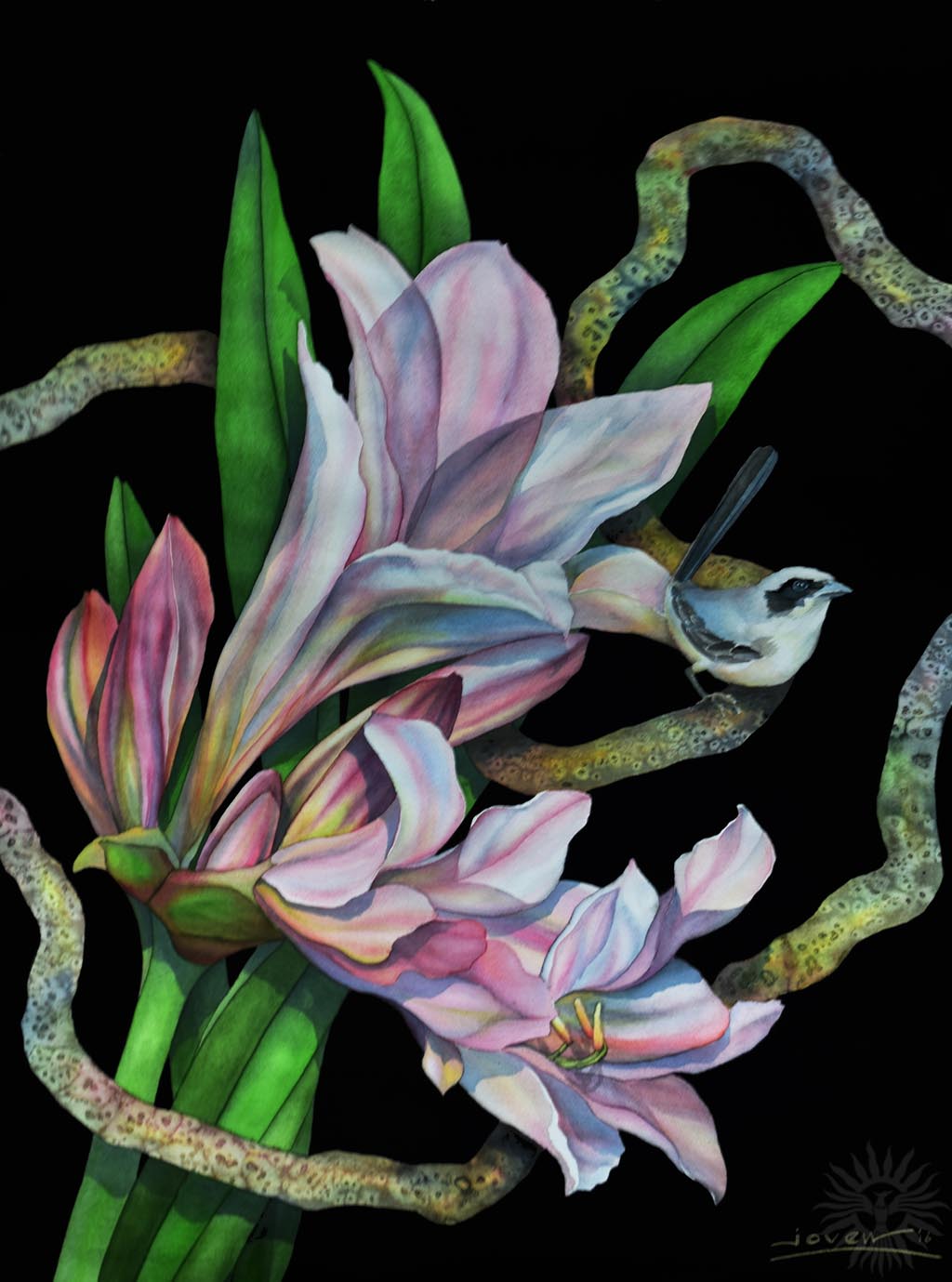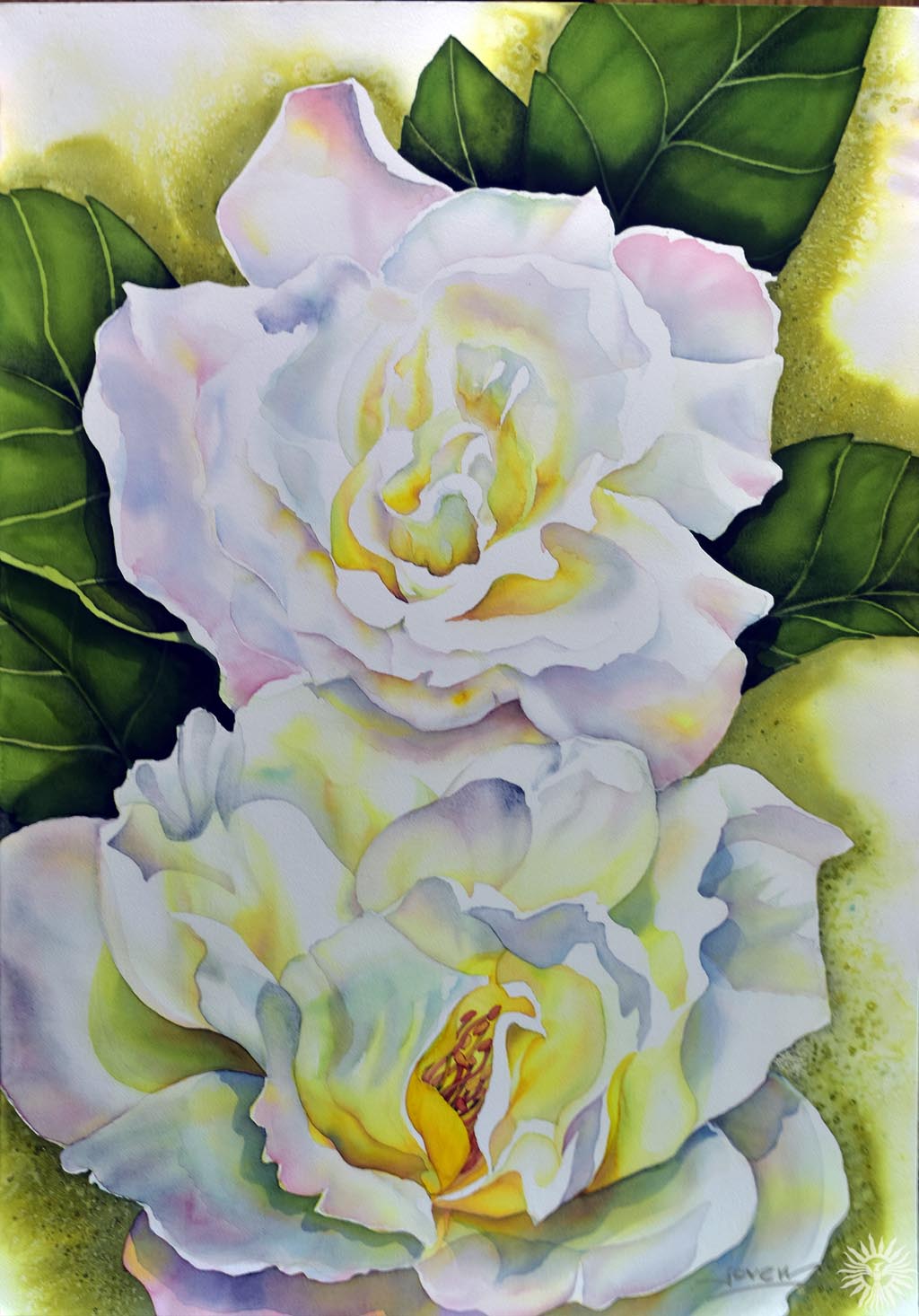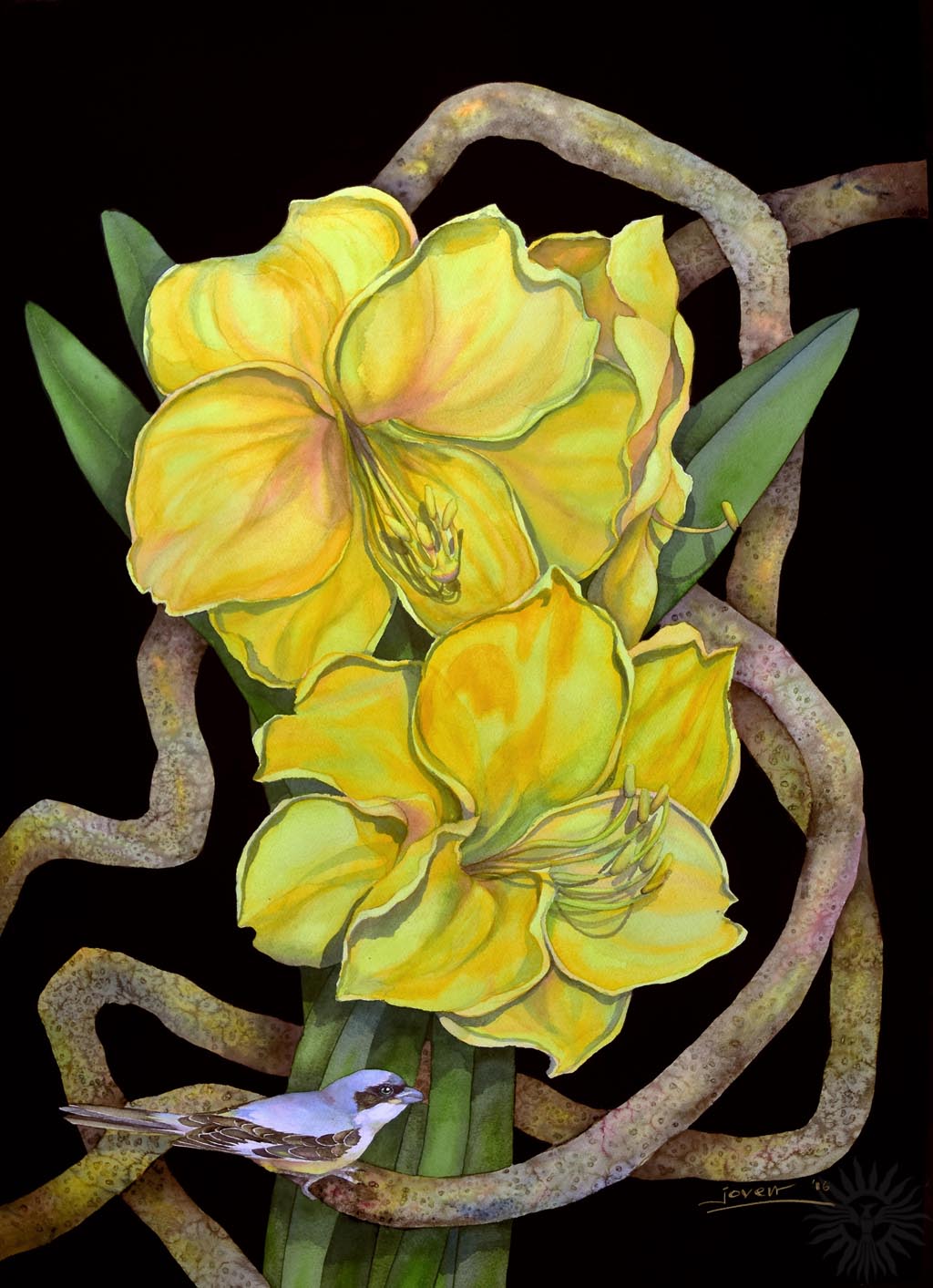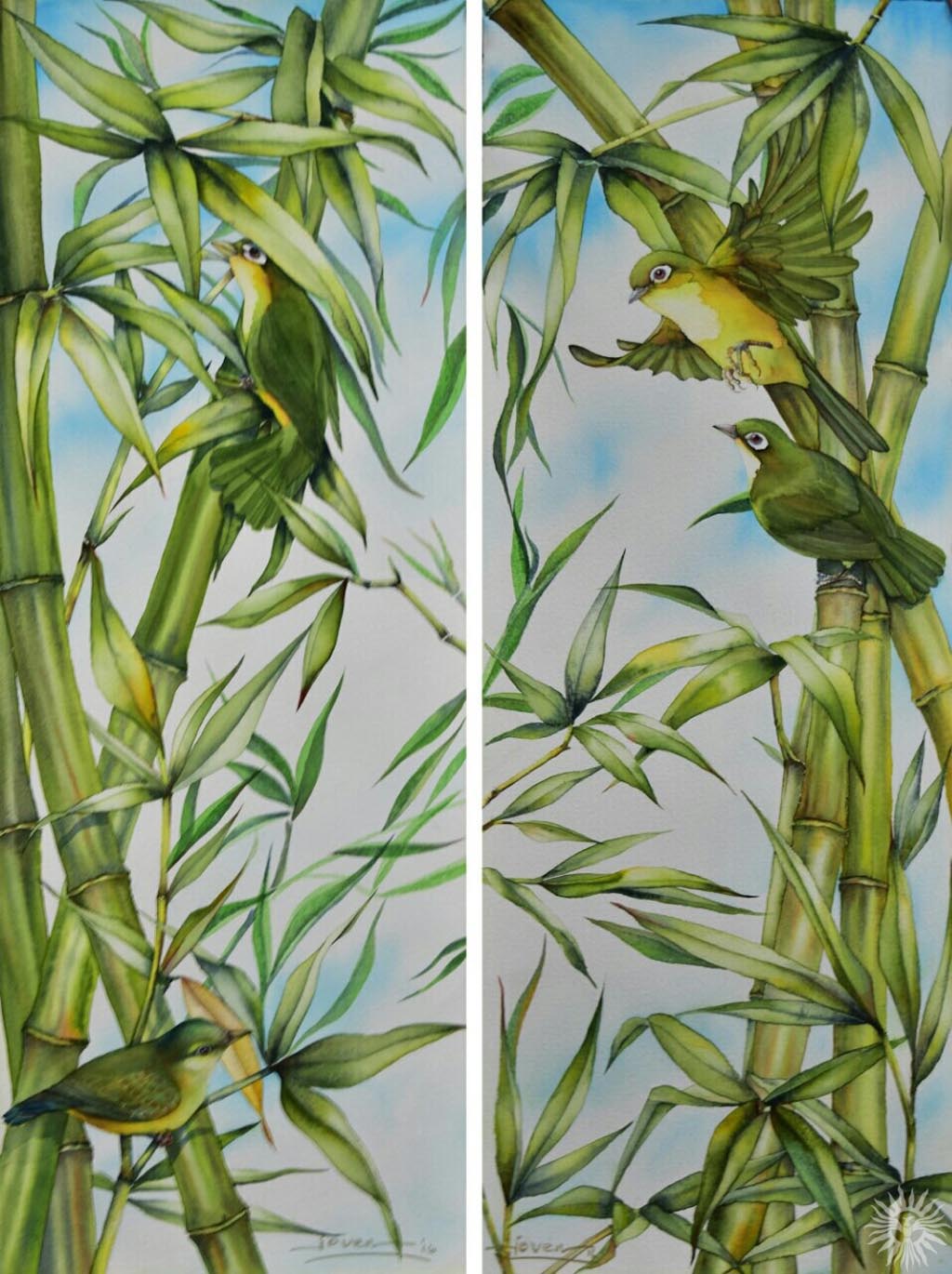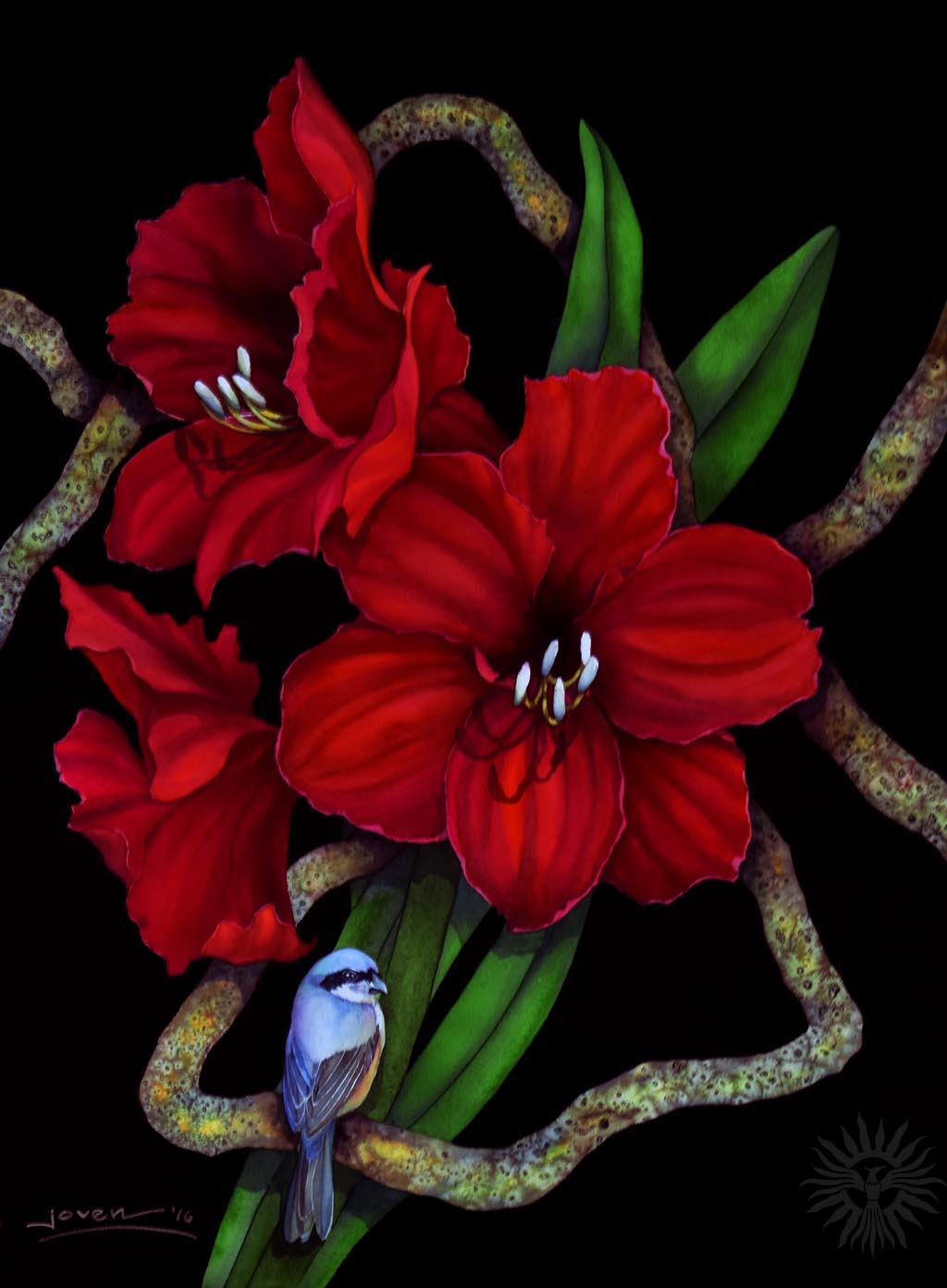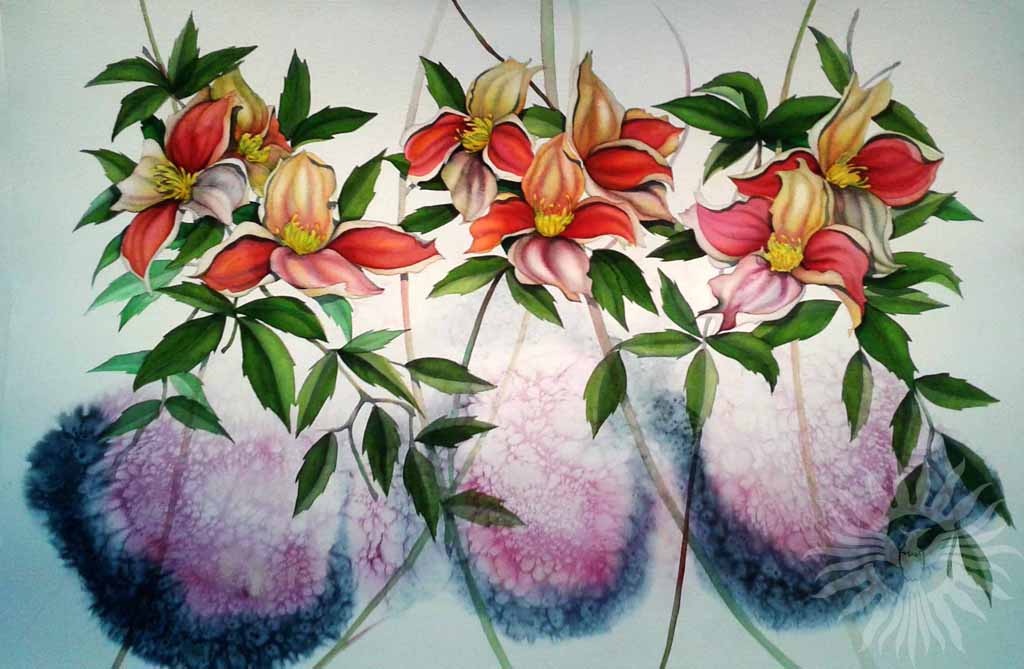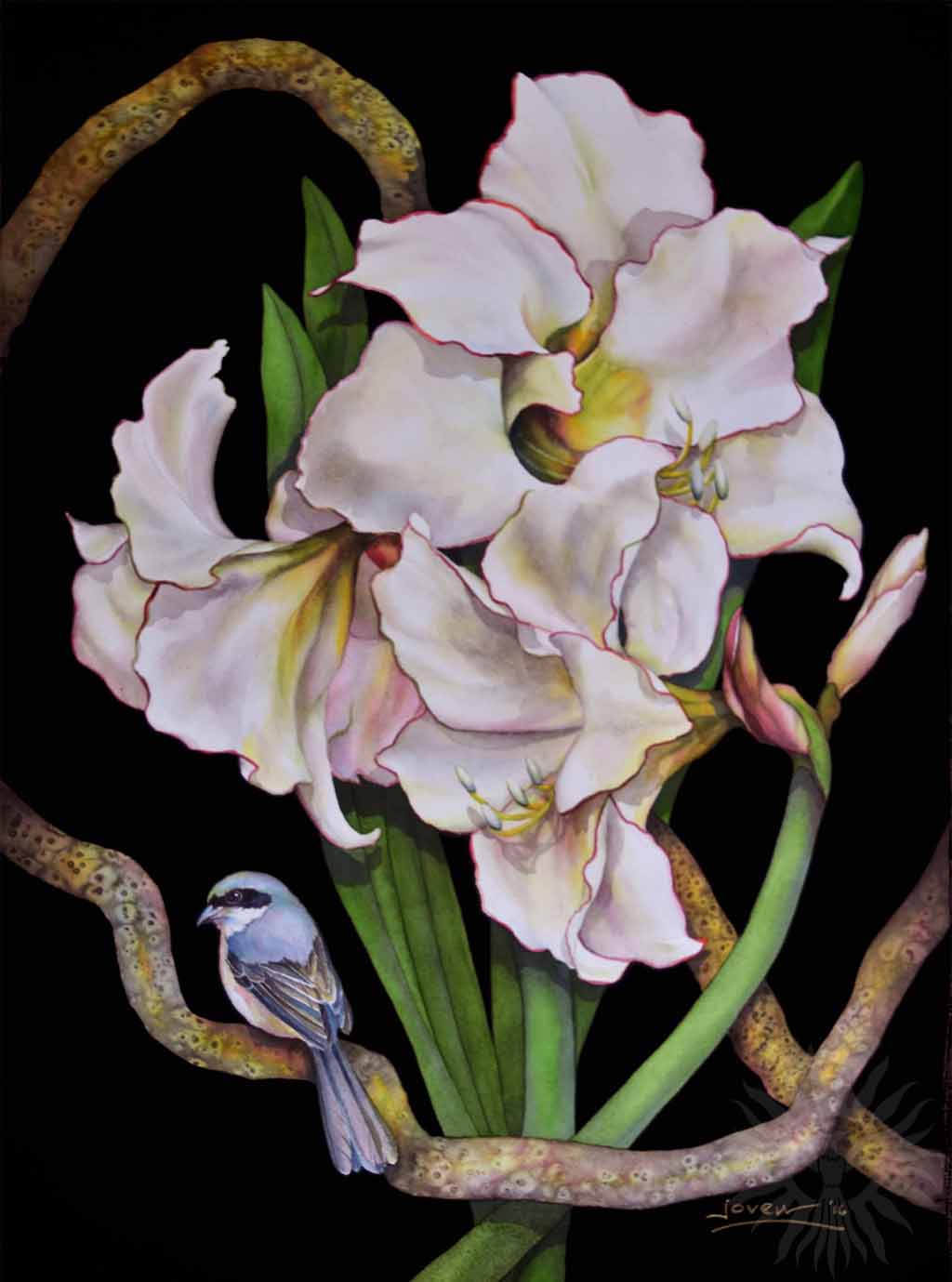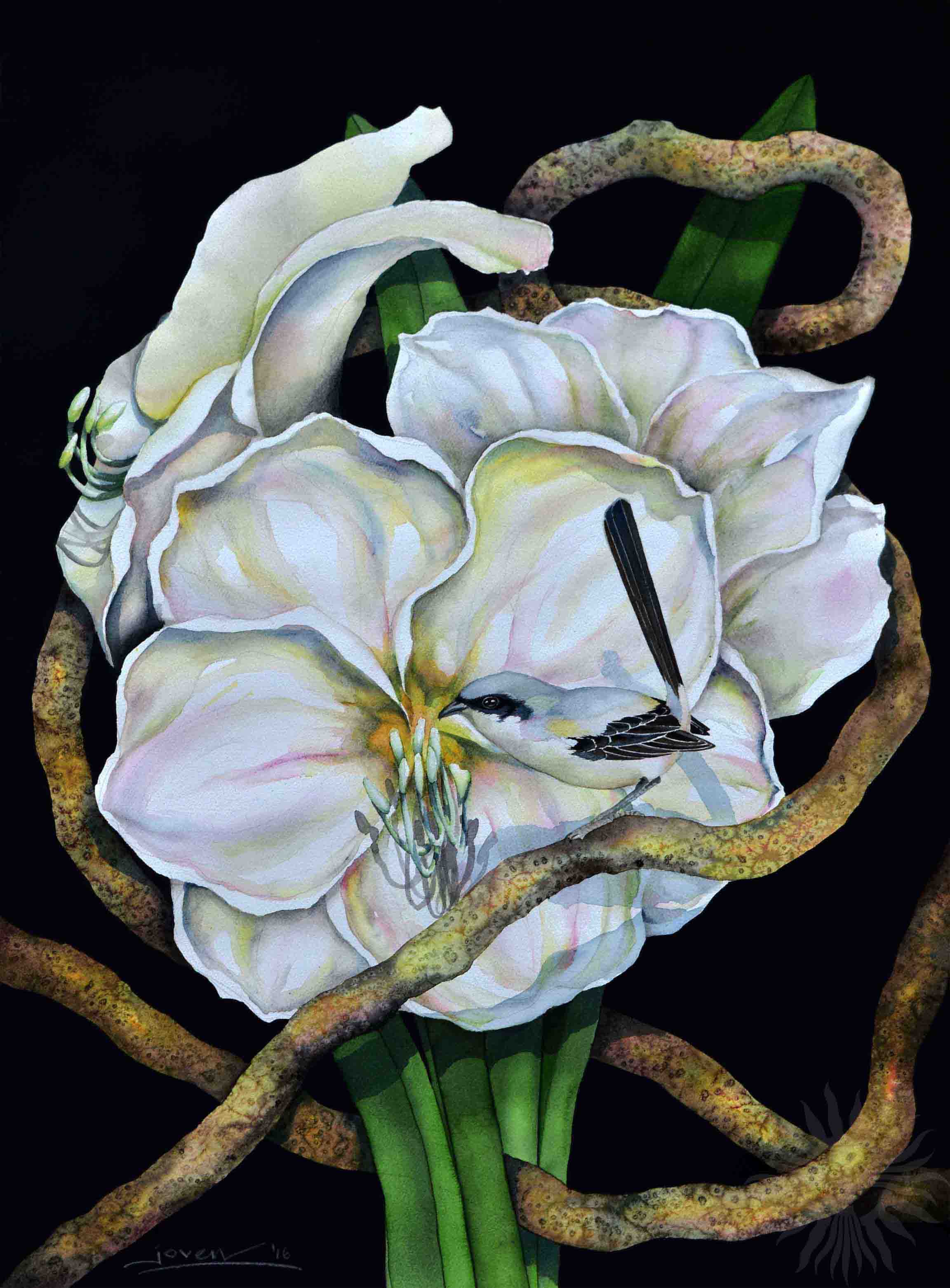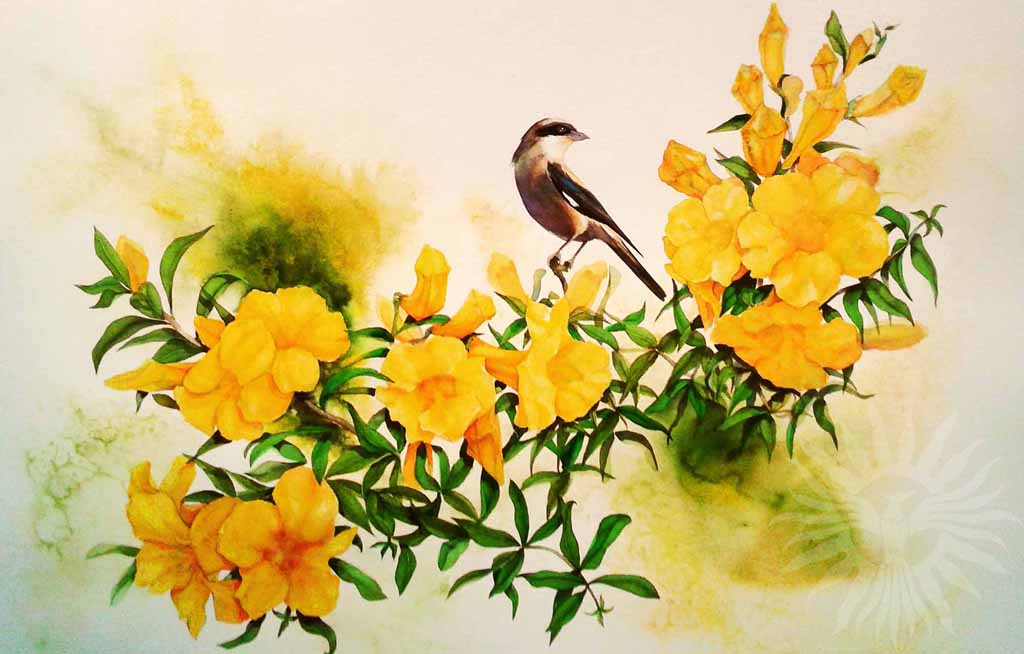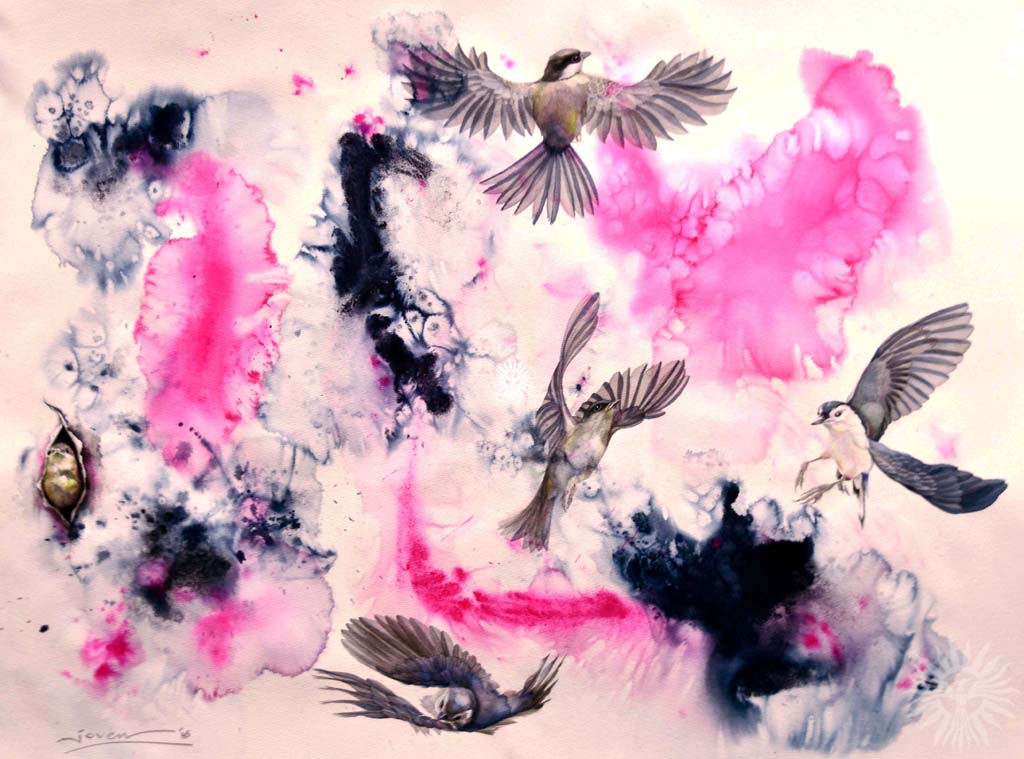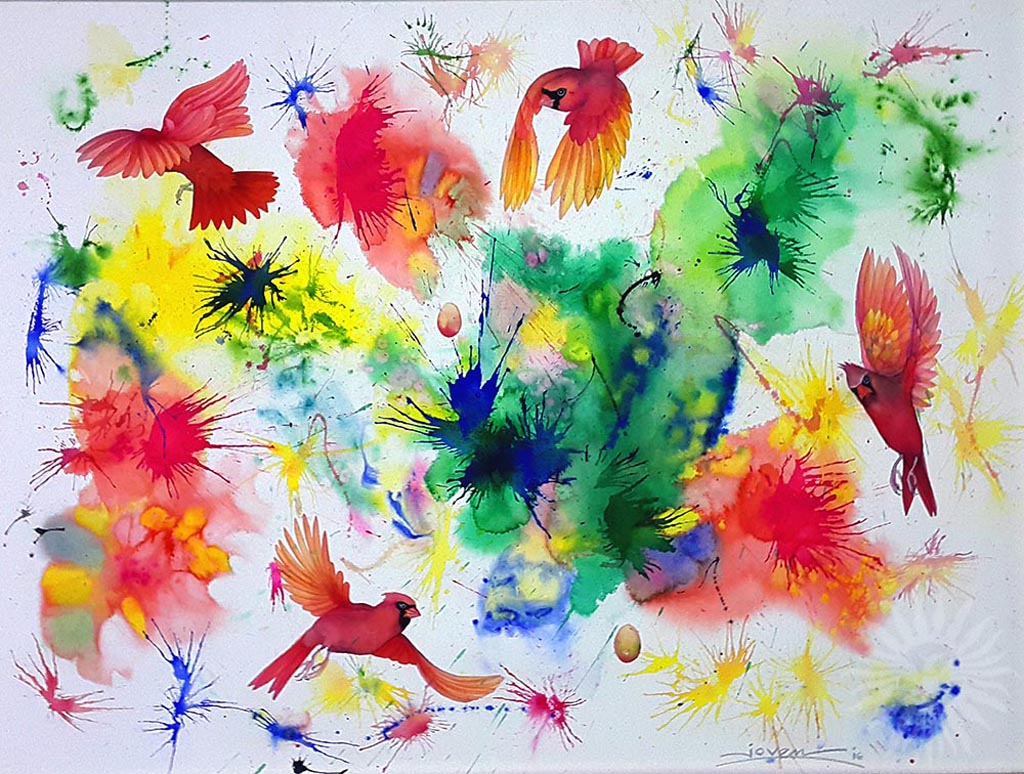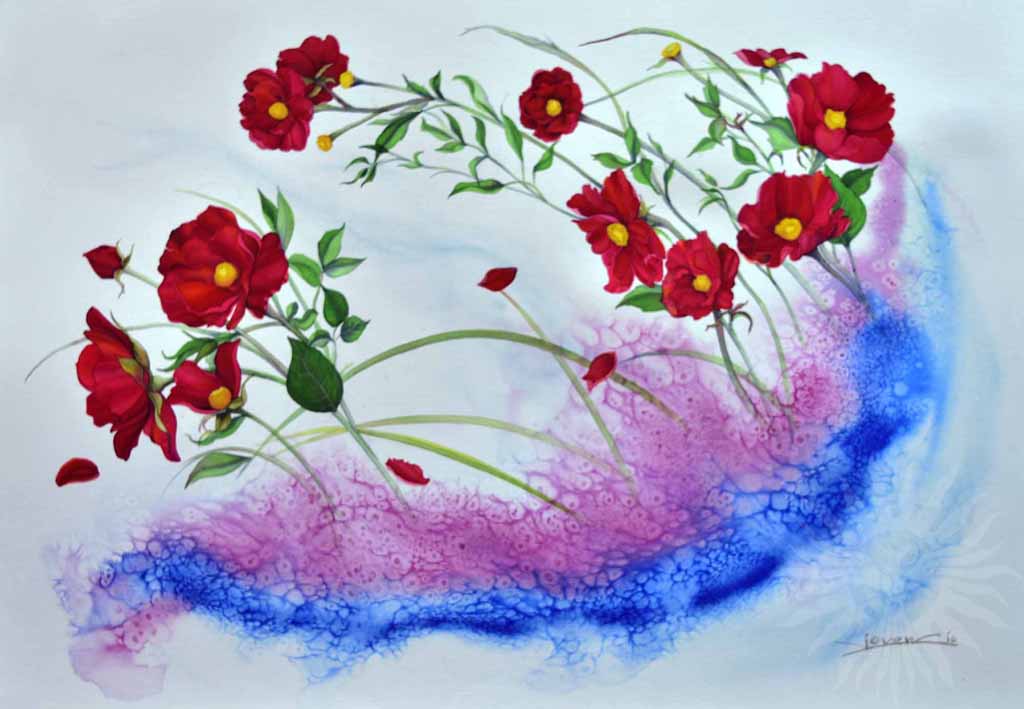Aliw-iw
September 7, 2016 - September 18, 2016
Architect Joven Ignacio
Makati Shangri - la Manila
JOVEN IGNACIO: An Art in Full Bloom
“I perhaps owe being a painter to flowers.” Thus remarked the great Claude Monet, the 19th century French painter to whom the world owes, on the other hand, the whole of idea of Impressionism. Monet devoted the last twenty years of his life, painting his garden at Giverny, which was dominated by his waterlily ponds, which he immortalized on acres of canvas in his mural paintings.
So, too, does one Filipino claim to owe having become a painter to flowers. Joven Ignacio, who is holding a solo show, organized by Hiraya Gallery, at the Makati Shangri-la Manila, shares that what started him painting were also flowers. It is a story in itself, though steeped in poignancy and pain, for these were the many flowers sent by visitors to his father, while he lay comatose in a hospital, felled by a stroke. In those painful moments, keeping his father company and whiling the silent hours away, Joven took to sketching the bouquets of flowers in the room.
Indeed, it was Mr. Ignacio, a Civil Engineer, who had encouraged his young son to take up Fine Arts, having sensed perhaps by paternal instinct, that the young Joven had the makings of an artist. And while Mr. Ignacio is no longer around to attend his son’s art exhibitions, he must be beaming with pride at what his son has achieved.
Foremost, is that Joven Ignacio, on top of being a painter now, is also an architect, having earned his degree in Architecture at the University of the Philippines College of Architecture. (While at this, an interesting sidelight to share is that two other distinguished architecture graduates of UST have made significant contributions to Philippine art: the late Roberto Chabet and the eminent glass sculptor Ramon Orlina.) Intent on furthering his studies, Joven, through a British Council scholarship, pursued a Masteral’s degree at the Sheffield University in England.
And though now a busy architect with his own private practice, he has ardently pursued painting to his heart – and his art’s – content. This is evident in “Aliw-iw,” where his floral works in watercolor are in proud display at the Makati Shangri-la Manila. While these floral works may be construed as botanical paintings, following the example set by the French artist Pierre Joseph Redoute’ (1785-1851) and the Flemish and Dutch painters, such as Brueghel, Ruysch, van Huysum, and de Heem, they impress me more as still lifes, their spirit and resonance conveying a lyrical response to nature, rather than an objective and analytical translation of a specific flowering plant. In fact, Joven likens their seductive appeal to our senses by christening them, not with names like sampaguita or ilang-ilang, but with sensuous feminine allure, thus: Alindog, Dalisay, Paraluman, Corazon. Moreover, unlike in strictly botanical paintings which are static and often artlessly presented, Joven’s works are expertly arranged as composition, against stark black, suggesting movement through the incorporation of the rope-like twines, twisting and coursing through the central floral image with serpentine grace.
Lending a delightful touch to these floral works is the presence of a little avian creature, a bird twittering in the midst of so many bristling colors, from the deep incarnadine reds to the soft creamy whites, dappled caressingly on the delicate petals. To be sure, the birds may bring to mind the works of the American naturalist painter and ornithologist John James Audubon, contemporaneous with Redoute’. That’s fine, too. It’s like Joven Ignacio has created the definite atmosphere of a country garden in full bloom, and surrounded his audience with the colors and sounds of nature.
And, oh yes, it was Claude Monet, once again, who exclaimed: “I must have flowers, always, and always!”
----- Cid Reyes
